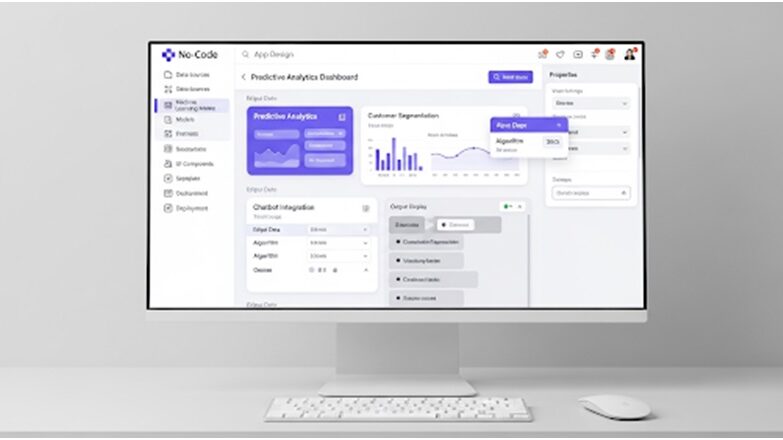Are you ready to dive into the world of console game development? Imagine a universe where characters come alive on your screen, moving with such fluidity and realism that you can’t help but be mesmerised. That’s the power of animation rigging, an innovative technique that takes gameplay to new heights. In this blog post, we’ll explore how animation rigging has become a game-changer in the industry, unleashing a whole new level of immersion and excitement for gamers worldwide. Get ready to embark on an adventure like no other as we delve into the fascinating world of animation rigging and its transformative impact on console game development!
Introduction: Why Animation Rigging is Essential for Console Game Development
Animation rigging is a crucial and essential aspect of console game development. It is the process of creating and manipulating digital characters or objects in order to give them movement, lifelike behaviour, and realistic interactions within the game world. This technique has become increasingly important in recent years as technology has advanced, allowing for more complex and detailed animations to be incorporated into games.
One of the main reasons why animation rigging is essential for console game development is its ability to bring characters to life. With the advancement of graphics technology, players have come to expect highly detailed and realistic movements from their in-game avatars. Animation rigging allows developers to create fluid movements that closely mimic how a human or animal would move in real life. This not only enhances the overall gaming experience but also adds depth and believability to the game’s world.
Moreover, animation rigging enables developers to create dynamic interactions between characters and their environment. With proper rigging techniques, characters can seamlessly navigate through different terrains, interact with objects such as weapons or tools, and even engage in hand-to-hand combat with other characters. These interactions are not only visually impressive but also add an extra layer of immersion for players.
Another reason why animation rigging is vital for console game development is its efficiency. In traditional animation methods, each frame of movement must be created manually by animators, which can be a time-consuming process. However, with animation rigging techniques such as inverse kinematics (IK), developers can quickly generate natural-looking movements by defining how a character’s joints should behave in response to external forces. This saves a significant amount of time and allows developers to focus on other aspects of the game’s development.
Furthermore, animation rigging also plays a crucial role in optimising game performance. In console game development, every aspect of the game must be optimised to run smoothly on the limited hardware resources of consoles. Animation rigging techniques such as motion capture and blend shapes can help reduce the strain on hardware by creating more efficient and streamlined animations.
Animation rigging is an essential aspect of console game development that enhances the visual appeal, immersion, and efficiency of games. With its ability to bring characters to life, create dynamic interactions, and optimise performance, it has become an integral part of modern video game production.
What is Animation Rigging?
Animation rigging is an essential part of modern game development, especially in the realm of console games. It is a technique used to create complex and realistic movements for characters and objects in a game. In simple terms, it involves creating a digital skeleton or structure that controls the movement of 3D models.
The process of animation rigging begins with creating a skeletal structure or “rig” made up of interconnected bones or joints, similar to the human body’s musculoskeletal system. This rig serves as the foundation for all the movements and actions that a character can perform within the game. By manipulating these bones, developers can control how each joint moves and rotates, thus creating fluid and lifelike animations.
One of the primary benefits of animation rigging is its ability to save time and resources during game development. Before this technique was widely used, animators had to manually animate each frame of movement for every character in a game, which was incredibly time-consuming and labour-intensive. With animation rigging, developers can easily reuse pre-made rigs for different characters or objects in their games, significantly reducing production time.
Another advantage of using animation rigging is its flexibility in creating dynamic movements. Traditional methods often resulted in stiff animations that lacked natural motion; however, with animation rigging tools such as inverse kinematics (IK), physics simulations, and motion capture devices, developers can create more organic movements that mimic real-life actions. This level of realism not only enhances gameplay but also immerses players into the game world.
Overall, animation rigging is an important aspect of game development that allows for more efficient and realistic character and object animations. It is a crucial tool in creating immersive gaming experiences that captivate players’ attention and bring virtual worlds to life.
The Evolution of Animation in Games
Animation has played a crucial role in the development and success of video games since their inception. From basic pixelated movements to life-like animations, the evolution of animation in games has been a fascinating journey. In this section, we will explore how animation has evolved over the years and its impact on console game development.
1. Early Years (1970s-1980s):
In the early days of gaming, animations were limited to simple 2D sprites with minimal movements. Most games used traditional frame-by-frame animation techniques that involved drawing each frame by hand, resulting in stiff and jerky movements. However, as technology advanced, game developers began experimenting with different animation techniques such as rotoscoping (tracing over live-action footage) and keyframe animation (setting key poses for characters). This led to more fluid and realistic animations in games like Donkey Kong (1981) and Super Mario Bros (1985).
2. Rise of 3D Animation (1990s):
The 1990s saw a significant shift from 2D to 3D graphics in video games. With advancements in hardware capabilities, game designers were able to create more detailed character models and environments. This also opened up new possibilities for motion capture technology where real-life actors’ movements could be captured and translated into digital characters’ movements. Games like Tomb Raider (1996) and Metal Gear Solid (1998) pushed the boundaries of 3D animation with lifelike character movements.
3. Motion Capture and Realistic Animations (2000s):
The early 2000s saw a significant increase in the use of motion capture technology in game development. This allowed for more natural and realistic character animations, making games like Grand Theft Auto III (2001) and Half-Life 2 (2004) stand out for their immersive experiences. Additionally, advancements in animation software such as Maya and 3ds Max made it easier for game developers to create complex animations without the need for expensive motion capture equipment.
4. The Age of Facial Animation (2010s):
As graphics technology continued to improve, so did the demand for more realistic facial animations. With games like Heavy Rain (2010) and The Last of Us (2013), developers focused on creating believable facial expressions to enhance storytelling and emotional impact. This trend has continued with newer games like Red Dead Redemption 2 (2018) and Death Stranding (2019), where facial animations are almost indistinguishable from real-life.
5. Artificial Intelligence and Procedural Animation:
In recent years, game developers have been exploring new techniques such as artificial intelligence (AI) and procedural animation to create more dynamic and responsive character movements. AI-powered animations allow for more natural reactions to in-game events, while procedural animation generates animations on the fly based on a set of predetermined rules. This has led to more immersive gameplay experiences in games like Assassin’s Creed Valhalla (2020) and Ghost of Tsushima (2020).
The evolution of animation in games has been a gradual process driven by advancements in technology and game design techniques. As we continue to push the boundaries of what is possible, it is safe to say that animation will continue to play a crucial role in creating immersive and engaging gaming experiences.
Benefits of Using Animation Rigging in Console Games
Animation rigging has become an essential tool in the development of console games, providing developers with a wide range of benefits that elevate the overall quality and experience of their games. In this section, we will explore the various advantages and benefits of using animation rigging in console game development.
- Improved Visual Realism: One of the main benefits of using animation rigging is its ability to significantly improve visual realism in console games. By applying realistic physics and movements to characters, objects, and environments, animation rigging creates a more immersive gaming experience for players. This enhanced realism can make even the most fantastical worlds feel more believable and engaging.
- Smooth Animations: Animation rigging allows for smoother animations by enabling precise control over character movements. Traditional animation techniques require animators to manually animate each frame or keyframe, which can result in jerky or unnatural movements. With rigging, animators can create complex movements with ease, resulting in smooth and fluid animations that enhance the overall gameplay experience.
- Time-Efficient Development: Another significant benefit of using animation rigging is its ability to save time during game development. Rigged characters and objects have pre-defined movement patterns that can be easily manipulated by animators without having to start from scratch every time. This streamlines the animation process, allowing developers to focus on other aspects of game design while still delivering high-quality animations.
- Flexibility in Character Design: Rigging also provides developers with greater flexibility when it comes to character design. Using rigging, animators can create a wide range of movements and poses for characters, giving them a more natural and lifelike appearance. This allows for more diverse and dynamic character designs that can enhance the overall storytelling and gameplay experience.
- Better Performance: Animation rigging can also improve game performance by reducing the strain on hardware resources. As animations are pre-defined and controlled by rigging systems, they require less computing power than traditional animation techniques. This means that console games using animation rigging can run smoother and with fewer frame rate drops, resulting in a more enjoyable gaming experience for players.
- Customisation Options: Another advantage of using animation rigging is the ability to customise character animations to fit specific gameplay mechanics or scenarios. For example, if a game features a character with different abilities or weapons, animators can use rigging to adjust their movements accordingly. This level of customization adds depth and variety to gameplay, making it more engaging and challenging for players.
- Cost-Effective Solution: Compared to traditional animation techniques, using rigging is a more cost-effective solution for game developers. As mentioned earlier, rigging saves time during the development process and requires fewer resources, resulting in lower production costs. This makes it an attractive option for game developers, especially when working on projects with tight budgets.
Animation rigging has become an essential tool in console game development, providing developers with a wide range of benefits that enhance the overall quality and experience of their games. From improved visual realism and smoother animations to time-efficiency and cost-effectiveness, animation rigging has revolutionised the way games are created and played on consoles.
Conclusion
In today’s gaming industry, staying ahead of the game is crucial for success. Animation rigging has proven to be a powerful tool for console game development, enabling developers to create more realistic and immersive gameplay experiences. With its ability to enhance character movements and interactions, animation rigging is revolutionising the way games are developed and played. As technology continues to advance, we can only imagine how much further this innovative technique will take us in the world of gaming. The future looks bright with animation rigging leading the way towards even greater possibilities.











